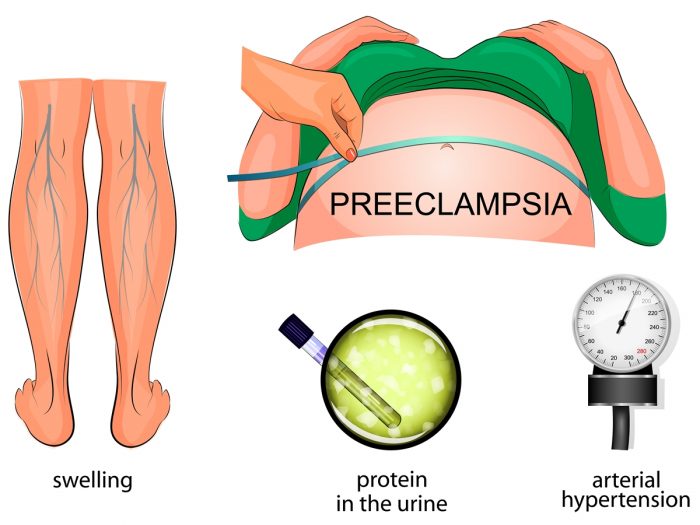Preeclampsia (PE) is a condition that only affects pregnant women, usually after week 20 of the pregnancy. Some common symptoms include gestational hypertension and protein in the urine. It is often precluded by high blood pressure, but gestational hypertension might not always be preeclampsia. This condition affects about 5-8% of all pregnancies.
Tests for Preeclampsia
The tests for preeclampsia are quite simple, and most cases can be detected during normal prenatal check-ups, either through a blood test, urine test, or simple observation of weight gain. More in-depth tests include a blood test that can detect specific syndromes, as well as the presence of uric acid in elevated levels. You will also provide urine samples over a 24-hour period to measure protein levels, and test kidney functions with the help of a creatinine clearance test. With the help of various tools, doctors can make an accurate diagnosis. [1]

Treatments for Preeclampsia
As stated above, the only cure for this condition is the delivery of the baby, but this isn’t always possible, particularly if the symptoms appear earlier than the 20th week. The best options for formal treatment include resting the body and taking various medications to counter the symptoms.
Bed Rest
While traditional recommendations often suggest bed rest to lower blood pressure, this can also elevate the risk of blood clots. Only take bed rest if your doctor recommends it. [2]
Medications
Blood pressure-lowering medications and corticosteroids are commonly used to prevent some of the worst symptoms of preeclampsia and help to speed the development process in the infant if you are preparing for a pre-term birth. [3]
How to Prevent Preeclampsia
If you want to lower your risk for this condition, avoid having high blood pressure before getting pregnant. This means exercising more, maintaining a strictly healthy diet with low sodium, and controlling any weight fluctuations. [4]
